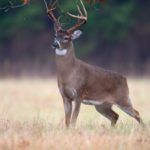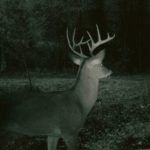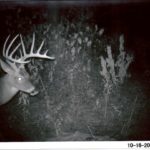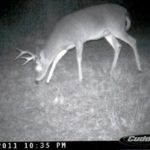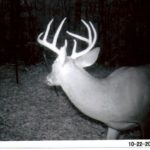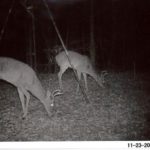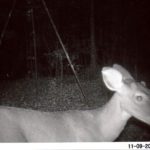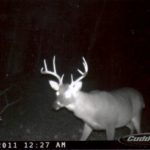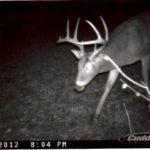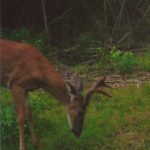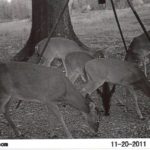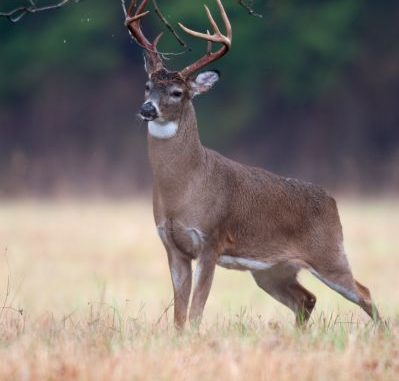
Are your club’s rules set up to properly manage your deer herd? Take this test to see if you need to make some changes.
It’s time for the 2012 edition of Shoot-Don’t Shoot Sportsman, so grab a pen and paper, and mark how many times you would squeeze the trigger.
How many times have you heard, “If its brown, it is going down” or “If I don’t shoot it, someone else will” or “I only get to hunt a few days, so I just want to kill a deer, any deer” or “Any buck is a trophy buck, it is all in the eye of the beholder?”
If you really think about it, these are all legitimate reasons for shooting a deer. After all, deer hunting is supposed to be a recreational activity that allows you to escape the problems of the world and re-create yourself in the great outdoors.
Unfortunately, hunting has become a serious business to many hunters; just visit any of the outdoor stores that sell hunting gear and supplies, and you will see just how serious it has become. Most hunting clubs have developed rules and regulations to regulate the hunting activity of the members in the club, just as the Louisiana Department of Wildlife & Fisheries has rules and regulations to regulate deer hunting in general.
With so much regulation it seems that the recreational aspect has gone out of deer hunting, and that is a shame.
Now certainly there have to be rules and regulations to properly manage the resource, and no doubt the actual regulation of the hunters who are doing the deer hunting also needs to be properly managed. Basically LDWF works hard to provide as much deer hunting opportunity to all deer hunters, both on private and public lands.
The wildlife agency leaves it up to the private landowners and clubs to manage their hunters, while the agency manages the activities of those hunting public lands.
Clubs and landowners have developed their own regulations to spread the resource around among the membership and to develop the type of deer herd the club desires.
There is no doubt that the general deer-management philosophy has moved in the direction of the creation of a deer herd with an older population of bucks. The days when the buck kill consisted of 75 percent or more of 1 ½-year-old bucks is pretty much over; this type of management is often referred to as traditional deer management whereby any buck, regardless of age or size, is fair game.
This management philosophy has been replaced by quality deer management with the objective of protecting the younger bucks, those that are 1 ½ and 2 ½ years old, letting them grow another year or two and then targeting them in their harvest program.
Quality deer management had its beginnings in the mid ’70s when two biologists in Texas, Al Brothers and Murphy Ray, wrote and published their book Producing Quality Whitetails.
This concept of allowing younger bucks to grow older was first viewed as being one designed to produce trophy-class bucks, which can be very difficult. The Quality Deer Management Association (QDMA) was begun in South Carolina by biologist Joe Hamilton, and this association slowly began to make inroads into the idea of producing quality deer across the Southeast. By the early ’90s, the concept was catching on in Louisiana, and today has basically become the management program on most private lands. This idea is also being experimented with on public areas in Louisiana.
Quality deer management is not designed to produce trophy deer, although it can and does; Trophy deer management is an entirely different program that targets bucks older than 4 ½ years, the age when they should have their best antlers and will score high on the Boone and Crockett scale.
The goals of quality deer management are to properly manage habitat so it provides everything a deer needs for good growth and development, to regulate the deer harvest and protect primarily the 1 ½-year-old age class, to educate and regulate deer hunters so they understand what to shoot and what not to shoot, and to monitor the herd through the collection of harvest data and observation data.
It is an involved process, and can be quite challenging.
Hunting clubs that lease land from a timber company do not have the ability to manage their deer habitat, so this can present problems for the club. Landowners having small tracts of land also will have difficulty with their herd management since deer will be ranging on and off their land, which necessitates the need to cooperate with adjacent landowners for the program to be effective.
Last year Louisiana Sportsman published my article about Shoot-Don’t Shoot, with the objective of presenting information about how to determine what deer to shoot and what deer to allow to grow older.
The focus of most hunters regarding shooting a buck is directed toward the antlers. Because of this, most clubs create antler restrictions to protect their younger bucks, requiring hunters to be adept at field-judging antlers; not an easy task when a decision has to be made in a matter of seconds.
In addition to this problem, growth and development of bucks across the state will vary from one habitat site to another and, therefore, there is no one-size-fits-all solution.
Other physical characteristics of the buck must be considered in the decision-making process.
So the only way to know what really to shoot and what not to shoot is through a clear understanding of the growth and development of your particular deer herd.
This means detailed harvest records must be collected during the season: jawbones for aging harvested deer, specific antler measurements of bucks and examinations of females for lactation to determine their reproductive activity.
If you do not have this data, you are wasting your time with rules regarding what bucks hunters can shoot.
It is therefore essential that you collect this physical data and work with a biologist who will help develop a sound program that will produce results.
2012 Shoot Don’t Shoot
This second edition of Shoot-Don’t Shoot is a followup to last year’s story, and hopefully it will give you more information that will help with your management program, as well as giving you some material to talk about around the campfire at the deer camp.
Again, every management situation is different and there is not a one program cure-all. Habitat is so critical in a quality deer program and if the habitat is on the low end, the deer will be on the low end in terms of quality. If the deer density is too high, the physical condition of the deer will be on the low end.
Quality deer management is a total management program that manages the habitat, the deer herd and the hunters.
If you have been keeping complete harvest records for several years, you should have a fair handle concerning the growth and development of your deer herd. If you do not understand the data, get with a biologist. Good data should give a clear picture of the antler growth in the various age classes of your bucks, which should enable you to understand what young bucks to protect and what bucks can be targeted.
Again, the goal is to allow some of the younger bucks to grow older and have the desired antler growth hunters are looking for.
But the focus should not just be on antlers.
Yearling bucks (1 ½-year-olds) will look like a skinny, rectangle box with long legs, somewhat like a newborn horse. The thin neck and slim body reminds you of a doe. Antlers will vary, but spikes are common in this age class and antler mass will be thin.
The 2 ½-year-olds should have branched antlers, and their bodies will still look like a rectangle box with straight lines across the top of the back and bottom of their bellies. It would be desirable for these bucks to have eight points, but on low-end habitat they may only have six.
The 3 ½-year-olds should have bodies that looks heavy, with necks beginning to blend in with their bodies and the antlers should have decent mass (at least 3-inch bases, 17- to 20-inch main beams, eight or more points and inside spreads around 15 inches).
However, it must be stated again that habitat conditions will dictate growth and development, so your program has to be designed to fit your habitat.
Most of the following photographs were taken during the 2011-12 hunting season, with the remainder captured during the summer of 2012, prior to the 2012 deer season.
Look at the photographs and decide whether you would shoot or not shoot the deer. Consider the age of the buck, the antler growth, body size and potential B&C score.
Some of the deer were harvested, so we know their age, weight and antler score.
My comments are subject to debate because I am a firm believer in shooting the low-end bucks in each age class and allowing those with better potential to grow older and become the deer most hunters desire.
Photo No. 1 – Desoto 10-pointer
This buck appeared in my book Louisiana Whitetails in the chapter titled “Shoot, Don’t Shoot.”
The buck is a nice 10-pointer living in the piney woods of Desoto Parish. It would roughly score around 140 B&C, and would be a good one for the bow hunter to harvest because it would qualify for the Pope & Young Record Book.
I suggested that the gun hunter pass it up and let it grow older. It has good G2s and G3s, the main beams are around 20 inches long and the inside spread is good.
Let it go and it will grow.
If you decided you would let it grow older, you made a good decision because photo No. 2 is the same buck a year older.; if you shot it with your bow, hopefully you got it officially scored for the state records because it is a fine trophy.
Photo No. 2 – Desoto 13-pointer
If you took my advice and passed up the 10-pointer in photo No. 1, this is the buck it turned out to be.
Dr. Steve Demaris and his associates at Mississippi State developed a computer program that examines photos of bucks and estimates the B&C score, and I sent him photos of the buck and their estimated score was 170 inches. After deductions it probably would have scored in the low 160s, a real Louisiana wall hanger.
No question about pulling the trigger on this buck: Shoot, and shoot straight.
I have a real good photo record of this buck during the 2011-12 deer season, and it will be the subject of an upcoming article in this magazine.
Photo No. 3 – Crab-claw Buck
Your first glance at the antlers would lead you to think that this is just a young buck, maybe a small 6-pointer. And if your rules require four points on one side, then you would just have to watch the deer feed.
However, a closer look at the body should lead you to believe it is older than 1 ½ years. The neck is not really skinny, and it has somewhat of a pot belly.
When I saw this deer last season I knew it was not a yearling buck because our 1 ½-year-old bucks simply do not have antlers with this much mass and growth. I suspected it to be a poor example of a 2 ½-year-old, but was really disappointed when I checked the age of it after my .444 dropped it.
The buck was 3 ½ years old, weighed 125 pounds and was never going to be the buck we are trying to grow. This is a real low-end buck, and one that needed to be removed; let another deer get the food this one would be eating.
I would say if your program protects a deer like this that you need to rework your program.
Photo No. 4 – Desoto 8-pointer
No doubt this buck fits the criteria your club may have established for bucks. A solid heavy 8-pointer that looks really nice.
However, if you start trying to rough-score the deer, you probably will not get above 130 inches on the B&C scale.
Nevertheless, it is a fine specimen for the piney woods habitat, and many would probably mount it.
This is where you have to do a gut-check. The G2s and G3s on this buck are showing a lot of potential, as is the main beam length and mass.
This is another one that you might shoot if you were bow hunting (don’t be disappointed if it does not make 125 inches), but if you were gun hunting it would be one to let go and let it get bigger.
It is growing on the same habitat as the 13-point buck, so chances are good it will get better.
Photo No. 5 – Twin bucks at a feeder
There should be no question about these two young bucks, which may even be brothers.
Rectangle bodies with straight lines on top and bottom, long legs and skinny necks. Let these two yearling bucks grow and get older.
But club rules say I can shoot any buck, and I may not get to hunt anymore. Well, if you need to kill a deer, have at it and put some meat in the freezer.
But please don’t ask that stupid question about why we do not have big deer!
Photo No. 6 – A nubby buck
The nubs of this 6-month-old male living in Area 2 are visible on this day in November, but in Areas 1 and 6 it might look like a doe fawn since fawning in these two areas occurs in August and September. Area 2 fawns in November are truly 6-month-old deer because they are born in May and June.
It does not hurt to sample a few deer from this age class, but keep it below the 10-percent level.
A 6-month-old female fawn is a good deer to harvest since it is nice and tender, and will not be producing any fawns next year.
Photo No. 7 – Wide 8-pointer
The antlers are definitely not very impressive on this deer. The sway back would indicate it is an adult, and as does the heavy neck; with the antler mass that it has, it may be 4 ½ years old.
Shoot this deer rather than one of the yearlings in photo No. 5 and you will have more meat for the freezer (not sure I would mount this deer, though).
This deer is living in the piney woods of East Feliciana Parish, and is probably the typical example of what most adult bucks in this area look like.
Photo No. 8 – Heavy 9-pointer
This deer has eluded me for the past two years at Camp David and, yes, I would not have hesitated to have shot it either year.
While it would not score real high, it is an above-average mature buck for this habitat and would be worthy of mounting.
It will be interesting to see if it has survived another year.
Some recent research indicates that clubs and landowners may be pushing their luck with trying to move mature bucks into the older age classes. There is a lot of stress on these animals and in some cases the natural mortality of these deer is higher than the hunter mortality.
It may be best to go ahead and harvest some of the mature bucks and get back what you have invested in producing them.
Photo No. 9 – Velvet 6-pointer
It should be easily recognized that this is not a yearling buck; instead it appears to be another crab-claw buck, just like the one in photo No. 3.
It would make one wonder if, indeed, genetics rather than low-end piney woods habitat is creating this situation.
Whatever the case, put it on your target list and be ready to put a tag on it.
Photo No. 10 – Does at feeder
There are seven deer to choose from in this photo. But we haven’t been seeing many deer for the past few years, and we probably shouldn’t be shooting does.
OK, keep buying corn and feeding deer and keep planting food plots that only get eaten up once the seed germinates and, again, please do not ask why you do not have big deer.
If you see this every time you go hunting you have more than enough deer to harvest, so go ahead and pick one out: Dealer’s choice!
